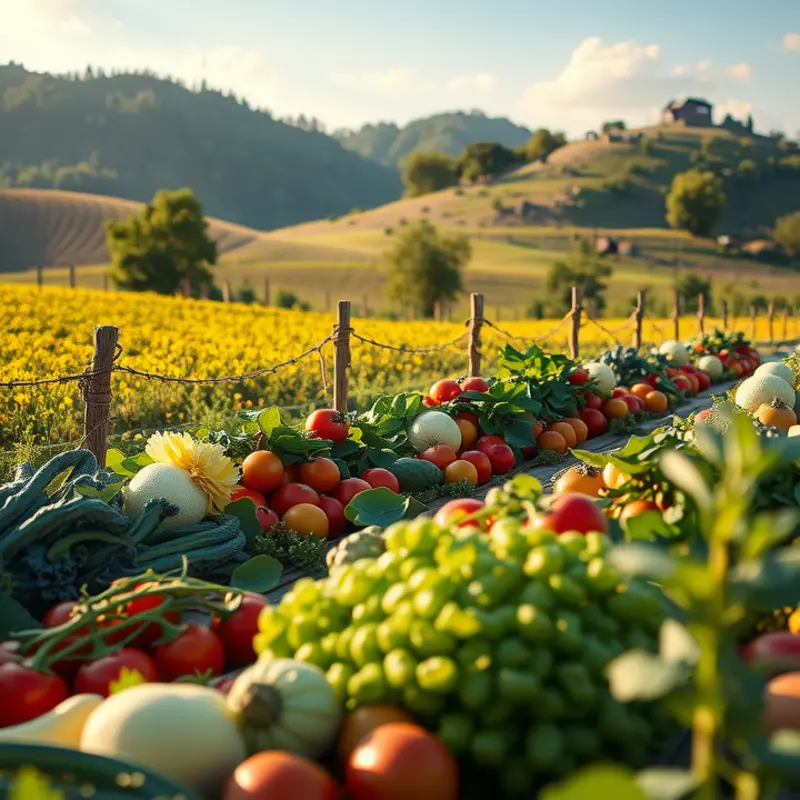Properly cooling hot meals is crucial for food safety and management. It ensures that your leftovers last longer, helps avoid foodborne illnesses, and minimizes waste by prolonging the freshness of cooked dishes. By following specific cooling methods and storage practices, you can maintain quality, enhance taste, and promote healthy eating at home. This guide offers actionable insights and strategies that can effortlessly be incorporated into your routine.
Quick Cooling Techniques for Leftovers

Cooling leftovers rapidly is essential for preserving both quality and safety. Hot food left to cool slowly is a breeding ground for bacteria, especially within the temperature “danger zone” of 40°F to 140°F. Below are some effective methods to ensure your leftovers are cooled quickly and safely.
One highly effective method is using an ice bath. To create an ice bath, fill a large container or sink with ice and cold water. Place your container of hot food into this ice bath, ensuring the water level matches the food level inside. Stir the food occasionally to encourage uniform cooling. This technique is particularly effective because it maximizes the contact between the cold environment and the food container, speeding up the process.
Another approach involves dividing large batches into smaller containers. Smaller portions cool faster due to increased surface area. For instance, instead of storing a large pot of soup in one container, divide it into several shallow ones. This not only facilitates faster cooling but also makes portions easier to manage for future meals.
Even fans can assist with cooling. Position a fan to blow across covered containers of hot food. The moving air enhances evaporation and heat dissipation. This technique can be especially useful if you are cooling several items at once and need an extra boost to expedite the process.
Temperature monitoring is crucial when implementing these techniques. Always check that food has reached a safe temperature below 40°F before storage in the refrigerator or freezer. Ensure your thermometer is calibrated correctly for accurate readings.
Rapid cooling is vital not just for preventing bacterial growth, but also for maintaining food quality. Slow cooling can lead to flavor and texture degradation, which affects the overall dining experience. Efficient cooling practices not only help maintain safety standards but also contribute to reducing food waste through better preservation.
For further insights on managing your kitchen with minimal waste, consider exploring our related food storage and safety practices. Implementing efficient cooling methods alongside other food safety practices ensures long-term benefits for both health and the environment.
Storage Solutions to Prevent Waste

Proper storage of leftovers is a crucial step in reducing food waste while keeping meals flavorful and safe. The key to effective storage begins with selecting the right containers. Glass containers are excellent for a variety of foods as they do not retain odors and are microwave safe; an added bonus is their transparency, allowing you to easily see the contents. Plastic containers, while often cheaper and lighter, should be used with caution; ensure they are BPA-free and avoid heating them. For meals that might be stored longer, consider vacuum-sealing. This method removes air and significantly extends the freshness of perishable items.
Labeling is another vital aspect to proper food storage. Use clear, visible labels with both the date of storage and the contents. This not only helps track the freshness but also organizes meals by priority for consumption. The first-in, first-out principle is a practical approach to minimizing waste and ensures your meals are consumed at their peak.
Thoughtful organization of your fridge can transform how you manage your leftovers. Keep frequently used items accessible and maintain an orderly system that allows all family members to see what’s inside without rummaging. Ensure your fridge is not overcrowded, as good air circulation is necessary to keep stored food at a safe temperature.
Longer storage durations may require freezing, a versatile method for meal preservation. However, not all foods freeze well. For instance, foods high in moisture, like cucumbers or lettuces, can become soggy once thawed. Cooked grains, casseroles, and soups often freeze beautifully, maintaining taste and texture. When freezing, use containers designed for the freezer or heavy-duty freezer bags, which can prevent freezer burn and maintain quality. Consider portioning meals before freezing to make defrosting quicker and more convenient.
Incorporating these storage strategies will not only help in preserving flavors and reducing wastage but also enhance overall meal management. For more insights on sustainable kitchen practices, explore our guide on eco-smart kitchen storage.
Final words
Efficiently cooling and storing your meals can make a significant difference in maintaining food safety and minimizing waste. By utilizing the quick cooling techniques outlined, you ensure that leftover dishes are stored safely and ready to be enjoyed later. Moreover, adopting proper storage solutions not only helps you keep track of your food inventory but also encourages responsible consumption within your household. Remember that effective food management at home goes a long way in reducing waste and improving overall meal satisfaction. Commit to these practices, and watch both your food quality and your environmental impact improve.







